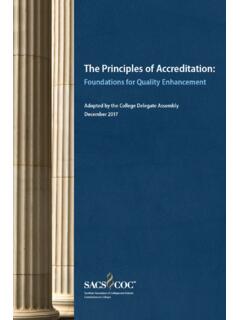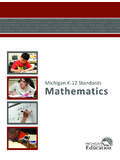Transcription of The 5E Instructional Model: A Learning Cycle Approach for ...
1 The Science Education Review, 3(2), 2004 49 The 5E Instructional Model: A Learning Cycle Approach for Inquiry-Based Science Teaching Lena Ballone Duran Bowling Green State University, OH, USA Emilio Duran The University of Toledo, OH, USA Abstract The implementation of inquiry-based teaching is a major theme in national science education reform documents such as Project 2061: Science for All Americans (Rutherford & Alhgren, 1990) and the National Science Education Standards (NRC, 1996). These reports argue that inquiry needs to be a central strategy of all science curricula.
2 Using a Learning Cycle Approach in the classroom helps to facilitate inquiry practices because Learning cycles focus on constructivist principles and emphasize the explanation and investigation of phenomena, the use of evidence to back up conclusions, and experimental design. Although there are several variations of Learning cycles, the one that is highlighted in this manuscript as a method to support inquiry-based teaching is the 5E Instructional Model (Bybee & Landes, 1990). The use of this model in several science education professional development programs is also addressed.
3 Introduction A flurry of science education reform efforts are sweeping the United States and incorporating state and national level initiatives, high-stakes testing, and funding conditions. Two of these major national reform efforts that aim to develop scientifically literate citizens include the National Science Education Standards (hereinafter called The Standards) (National Research Council [NRC], 1996) and Project 2061: Science for All Americans (Rutherford & Alhgren, 1990). The Standards for science teaching indicate that what students learn is influenced by the pedagogical methods by which they are taught.
4 On the other hand, Project 2061: Science for All Americans is based on the conviction that a scientifically literate person is one who is cognizant that science, mathematics, and technology are human enterprises dependent upon one another. Both reform reports reveal that science teaching should actively engage students, incorporate cooperative Learning , and de-emphasize the rote memorization of facts. In addition, the inclusion of inquiry-based teaching methodologies is a prominent theme permeating these reform documents. This paper discusses a specific Learning Cycle that encourages inquiry in science classrooms.
5 Inquiry-Based Teaching Inquiry may be referred to as a technique that encourages students to discover or construct information by themselves instead of having teachers directly reveal the information (Uno, 1999). The implementation of inquiry has had a place in science The Science Education Review, 3(2), 2004 50 classrooms for less than a century. Before 1900, most educators viewed science as a body of facts that students were to learn through memorization and direct instruction. However, by the 1950 s and 60 s, an inquiry-based rationale became more and more visible (National Research Council [NRC], 2000).
6 Recently, Project 2061: Science for All Americans (Rutherford & Alhgren, 1990) and The Standards (NRC, 1996) argue that inquiry needs to be a central strategy of all science curricula. The Standards emphasize the inclusion of inquiry-based lessons in the science classroom as part of the process by which new knowledge is acquired. Specifically, The Standards describe the inquiry process as follows: Inquiry is a multifaceted activity that involves making observations; posing questions; examining books and other sources of information to see what is already known; planning investigations; reviewing what is already known in light of experimental evidence; using tools to gather, analyze, and interpret data; proposing answers, explanations, and predictions; and communicating the results.
7 (p. 23) However, the shift to inquiry-based pedagogical practices in the classroom may necessitate a transition from textbook-dependency as the main resource of science information to a more hands-on Approach , where students are central to the Learning episodes. Recent research findings have shown that an inquiry-based Approach is beneficial to students and that even young children can learn through inquiry processes (Etheredge & Rudnitsky, 2003). A recent publication from the National Research Council (Bransford, Brown, & Cocking, 1999) illustrates a broad consensus about Learning processes.
8 Related to the findings discussed in this document, the National Research Council (2000) reveals that a classroom in which students use scientific inquiry to learn is one that resembles those that research has found as being the most effective for Learning for understanding (p. 124). Even though inquiry-based reform efforts are widespread around the country, many educators may be uncomfortable or unaware of ways to design science lessons that support inquiry Learning . However, the transfer and application of inquiry-based practices in the classroom can be accomplished by using practical tools or templates for Instructional design.
9 For instance, one strategy that can be helpful to teachers, as they embark on the development of inquiry-based lessons, involves the use of a Learning Cycle Approach (Abraham, 1997). The history of the Learning Cycle method dates back to the Science Curriculum Improvement Study (SCIS), an elementary school science curriculum project during the 1950 s (Atkin & Karplus, 1962). A Learning Cycle model divides instruction into various phases based upon an established planning method, and is consistent with contemporary theories about how individuals learn, constructivist ideas of the nature of science, and the developmental theory of Jean Piaget (Piaget, 1970).
10 A compelling case for implementing a Learning Cycle as a strategy to design inquiry-based science lessons is illustrated by Abraham (1997). This report synthesizes the findings from several The Science Education Review, 3(2), 2004 51 research studies such as Abraham and Renner (1986), Ivins (1986), McComas III (1992), Raghubir (1979), and Renner, Abraham, and Birnie (1985) and suggests that, in comparison with traditional pedagogy, the Learning Cycle can result in better retention of science concepts, higher achievement in science, superior process skills, improved attitudes toward science and science Learning , and improved reasoning abilities.












